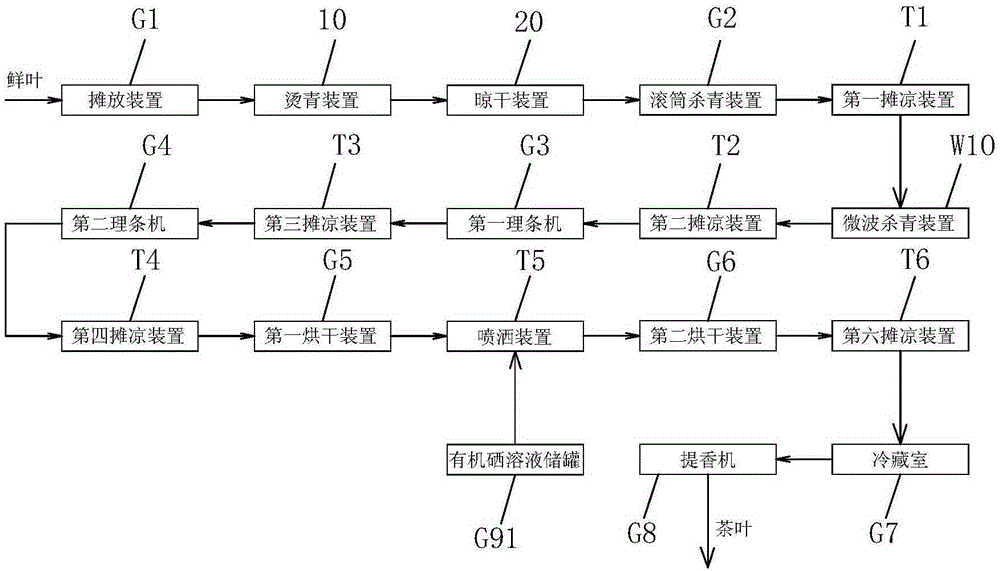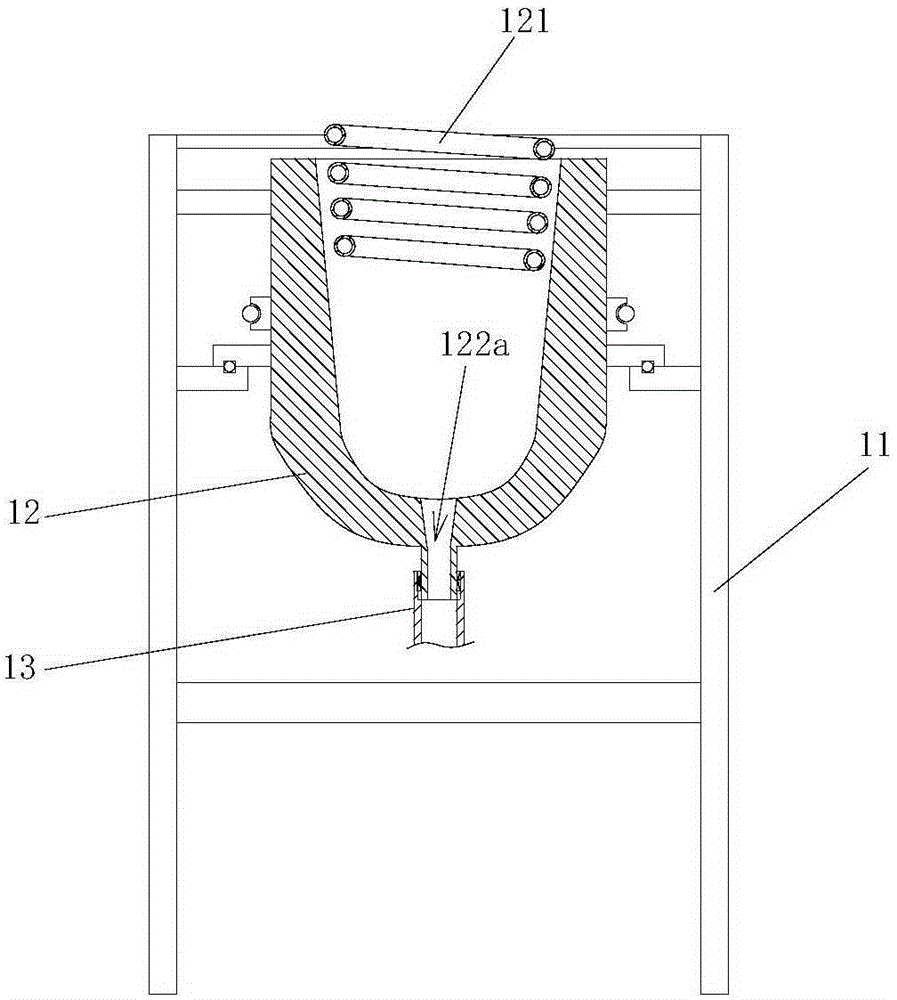Mass and continuous production process of selenium-enriched organic green tea
A technology of organic green tea and production process, which is applied in the direction of tea treatment before extraction, and can solve problems such as inability to fully clean tea leaves, uneven greening, and poor quality of tea soup
- Summary
- Abstract
- Description
- Claims
- Application Information
AI Technical Summary
Problems solved by technology
Method used
Image
Examples
Embodiment Construction
[0032] In order to make the objects and advantages of the present invention clearer, the present invention will be specifically described below in conjunction with examples. It should be understood that the following words are only used to describe one or several specific implementation modes of the present invention, and do not strictly limit the protection scope of the specific claims of the present invention. The "core wire" mentioned below refers to the center line of the component.
[0033] The invention provides a kind of green tea production equipment, such as figure 1 As shown, it includes a spreading device G1 connected in sequence for spreading the tea leaves, a scalding device 10 for scalding the tea leaves, a drying device 20 for drying the tea leaves, and a drying device 20 for drying the tea leaves. Roller de-greening device G2 for primary de-enzyming of tea leaves, first-stage cooling device T1 for primary de-enzyming of tea leaves, microwave de-enzyming device...
PUM
 Login to View More
Login to View More Abstract
Description
Claims
Application Information
 Login to View More
Login to View More - R&D
- Intellectual Property
- Life Sciences
- Materials
- Tech Scout
- Unparalleled Data Quality
- Higher Quality Content
- 60% Fewer Hallucinations
Browse by: Latest US Patents, China's latest patents, Technical Efficacy Thesaurus, Application Domain, Technology Topic, Popular Technical Reports.
© 2025 PatSnap. All rights reserved.Legal|Privacy policy|Modern Slavery Act Transparency Statement|Sitemap|About US| Contact US: help@patsnap.com



